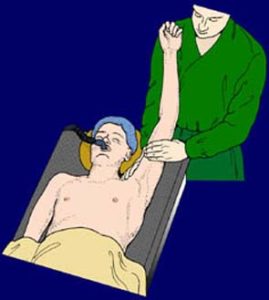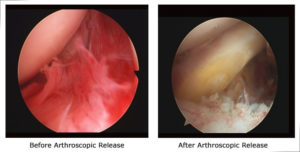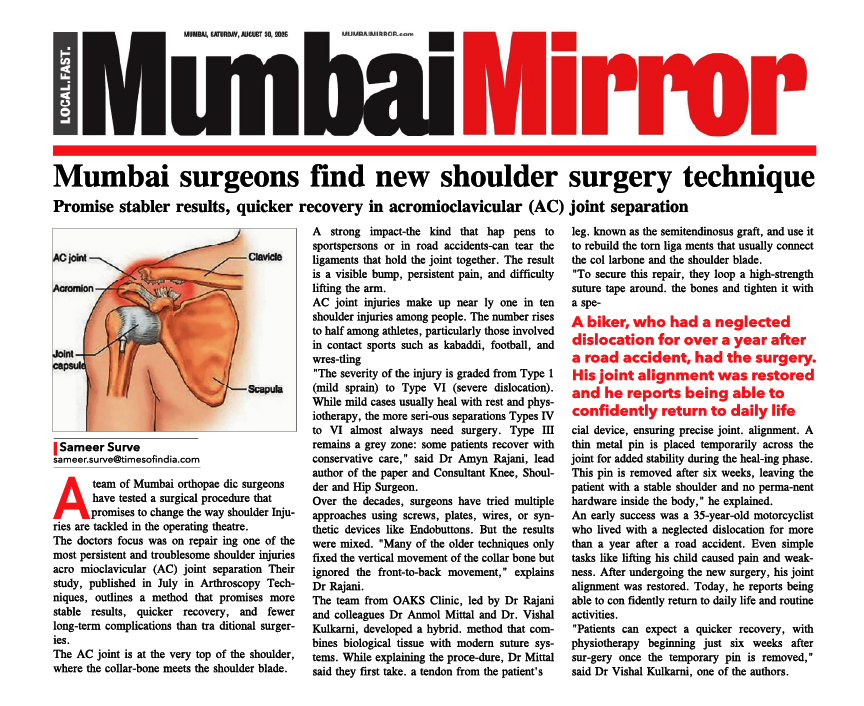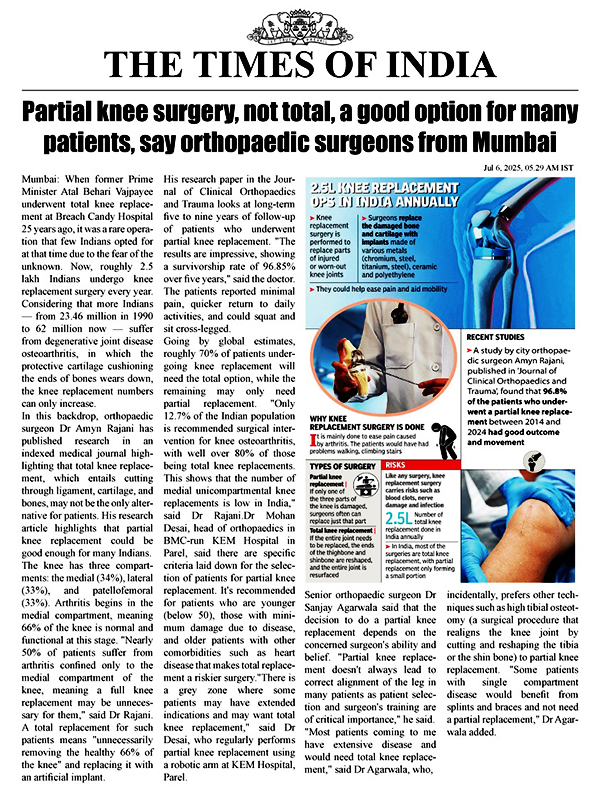Capsular Release for Frozen Shoulder
What is a Frozen Shoulder?
Frozen Shoulder, is also called adhesive capsulitis. In this condition, there is pain and stiffness in the shoulder. Over time, the Shoulder becomes very hard to move. The pain and stiffness form a viscous cycle, as in the pain gives rise to stiffness which in turn increases the pain, which causes more stiffness.
Pathophysiology
In Frozen Shoulder, the Shoulder Capsule thickens and becomes tight. Stiff bands of tissues call adhesions.
Frozen Shoulder Stages:
1) Freezing:
In the Freezing Stage, you slowly have more and more pain. As the pain worsens, your shoulder loses range of motion. Freezing typically lasts from 6 weeks to 9 months.
2) Frozen:
Painful symptoms may actually improve during this stage, but the stiffness remains. During the 4 to 6 months of the Frozen Stage, daily activities may be very difficult.
3) Thawing:
Shoulder Motion slowly improves during the Thawing Stage. Complete return to normal or close to normal strength and motion typically takes from 6 months to 2 years.
Frozen Shoulder Causes:
The causes of Frozen Shoulder are not fully understood. A few factors may put you more at risk for developing Frozen Shoulder.
Diabetes: Frozen Shoulder happens more often in people with diabetes, affecting 10% to 20% of these individuals. The reason for this is not known.
Other diseases: Some additional medical problems associated with Frozen Shoulder include hypothyroidism, hyperthyroidism, Parkinson's disease, and cardiac disease.
Immobilization:Frozen Shoulder can develop after a Total Shoulder Replacement Surgery has been immobilized for a period of time due to surgery, a fracture, or other injury. Having patients move their Shoulders soon after injury or surgery is one measure prescribed to prevent Frozen Shoulder.
Frozen Shoulder Clinical Evaluation:
The hallmark sign of this condition is being unable to move your Shoulder - either on your own or with the help of someone else. The more pronounced restriction of movement is external rotation.
Investigation of Frozen Shoulder:
Frozen Shoulder is more of a clinical diagnosis and an MRI is rarely needed to rule out other conditions.
Frozen Shoulder Treatment:
Non-Surgical Frozen Shoulder Treatment :
More than 90% of patients improve with relatively simple frozen shoulder treatments to control pain and restore motion.
Non-steroidal Anti-inflammatory Medicines: Drugs like aspirin and ibuprofen reduce pain and swelling.
Steroid Injections: Cortisone is a powerful anti-inflammatory medicine that is injected directly into your Shoulder Joint.
Physical Therapy: Specific exercises will help restore motion. These may be under the supervision of a physical therapist or via a home program. Therapy includes stretching or range of motion exercises for the Shoulder.

Frozen Shoulder Surgical Treatment:
If your symptoms are not relieved by therapy and anti-inflammatory medicines, you and your doctor may discuss surgery. The goal of surgery for Frozen Shoulder Treatment is to stretch and release the stiffened Joint Capsule. The most common methods include manipulation under anesthesia and Shoulder Arthroscopy.
Manipulation under Anesthesia: During this procedure, you are put to sleep. Your doctor will force your Shoulder to move which causes the capsule and scar tissue to stretch or tear. This releases the tightening and increases range of motion.
Shoulder Arthroscopy: In this procedure, your doctor will cut through tight portions of the Joint Capsule. This is done using pencil-sized instruments inserted through small incisions around your Shoulder.



